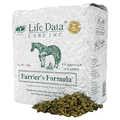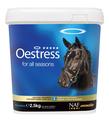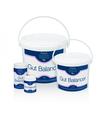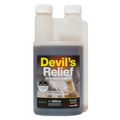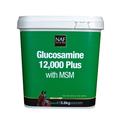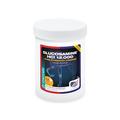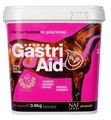Spring/summer is here! The sun is out and our ponies are loving the longer days out in the field, especially the fresh lush spring grass that comes with it. However is this good for them? In fact spring pasture-associated laminitis, obesity and digestive problems are a real issue horse owners need to be aware of. Do not worry though, below is a guide on all you need to know!
What is the problem with spring/summer grass?
Firstly - to be clear - there is nothing wrong with grass. It is highly nutritious and great as part of your horse’s diet!
The issue with spring grass is that it is rapidly growing in response to the increased sun and rain. This means it is particularly lush and contains higher than normal levels of ‘Non Structural Carbohydrates’ (NSCs), also known as ‘Fructans’. These are broken down by your horse into starch and sugars.
A horse that has been in during the winter and mainly fed hay, will not be used to these high levels of NSC in their food. The high NSC levels can upset the normal gut microflora, predisposing to colic and digestive upsets. The resulting high sugar levels in your horse’s bloodstream can also predispose to episodes of obesity, laminitis and Equine Metabolic Syndrome/Cushings.
How do I prevent pasture-associated disease?
It is recommended you consider managing the problems associated with spring grass in any horse, but particularly those prone to laminitis or any of the previously mentioned conditions. You can do this by any/all of the following steps.
-
Limit grass intake, by doing one or a few of the following:
-
Turnout to a dry lot (no grass) and feed hay with a balancer.
-
Turnout to grass with a grazing muzzle - especially if obesity is an issue in your horse.
-
Slowly introduce to grass, so your horse’s body becomes used to the high sugar levels. Turnout out for 1 hour a day initially, increasing by 30 minutes every few days.
-
Turnout in the morning or late at night only. NSC levels are highest in grass during the day.
-
-
Give preventative supplements:
-
Gut balancers - to prevent colic/digestive problems.
-
Laminitis support - to prevent episodes of laminitis.
-
Metabolic Support supplements - to prevent the effects of Cushings and Equine Metabolic Syndrome.
-
-
Manage your pasture effectively:
-
Grass NSC levels are highest at the base of the plant.
-
Move your horses onto a different field when the grass height is below 3 to 4 inches. They can then be returned when this returns to 6 to 8 inches. This prevents grazing of the base of the grass.
-
Follow the above advice and your horse can safely enjoy all the benefits that spring brings. If you have any questions about this blog then please contact our customer services team or comment below. We would love to help you and your horse where we can.
Written by: Dr. Nick Garside BVetMed MRCVS

